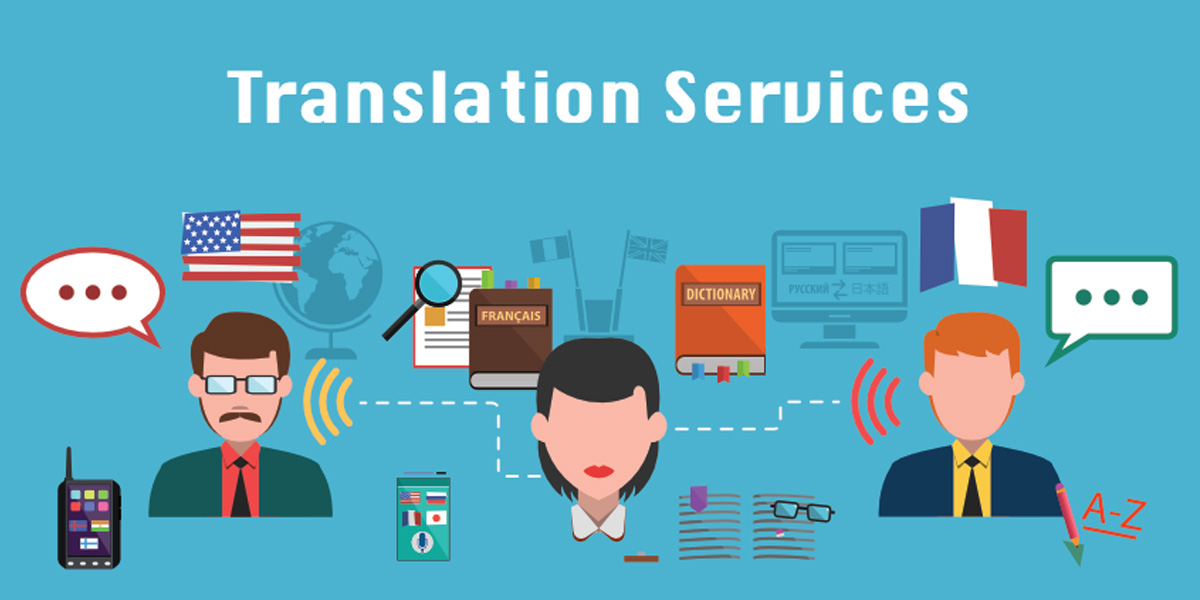
Professional Translators: How do they Actually work?
Often budget-strained companies ask about the utility of using the services of a translator as opposed to automated software. While automated software has no doubt improved over the years, translation services are way more than simply converting words from one language to another. Trafnslators need to have the proper technical knowledge and the must be well versed in the grammar of both the languages. They also have to be alert that word-by-word translation does not end up being dull, or worse, offensive to the ethnic or religious sentiments of the target audience. In order to achieve the intended effect, it is advisable that you choose a reputed translation agency in India.
In this article, we shall discuss the modalities adopted by professional translators in their work. Most translators undertake the following steps in completing any project.
1. Preparation:
a. This includes gathering the text to be translated from the client. The client may provide text in Word, PDF, or even Excel format. Sometimes clients also provide scanned PDFs, which are rather difficult to work with since they first need to be converted to Word format. In such cases, a small fee is charged for this extra work.
b. The next step is analysis. The text is analyzed using some specialized software, and similarities with previously translated text are determined. Based upon this analysis, a quotation is generated mentioning the cost of translation of the entire text.
c. Once the quotation is confirmed from the client’s side, the text is imported, and all modules and functions relevant to the project are activated.
2. Research:
Many translators work in different areas of specialization. Hence it shall be beneficial if you choose to award your project to a translator who has prior experience in the subject that your text is based on. For example, it is advisable to hire a medical translator for translating a medical journal and not a person who specializes in translating legal documents.
A good translator thoroughly researches the topic before even starting off. He gathers information about the client’s industry, his products, and so on. He compiles materials, glossary, and references that might be useful during the said translation.
3. Things that a translator has to consider:
A translator must keep a few points in mind while translating.
· Usage of correct dialect:
The translator must use the proper dialect in accordance with the target audience.
· Expansion and contraction of text:
He must also account for the fact that some languages tend to expand while others contract. For example, German is 25-30% longer than the English text. Hebrew, on the other hand, is much shorter. These differences impact the consideration for layout and space.
· Various degrees of formality:
The translator should also keep in mind the degrees of formality in a given language. For example, there are various levels of formality in the Japanese language. These tend to affect the tonality of the passage and should ideally be accounted for by a good translator.
· Gendered Languages:
Some languages assign gender to inanimate objects as well. An apt example is Hindi. A translator must be careful to use the correct gender for an object at all times.
4. The process of translation:
Translators often make use of software such as Trados Studio 2014. On one page the suggested translation is displayed. The translator goes through the snippet and decides whether to use this suggested translation or to modify it.
A small example might be helpful in this context. The French word ‘cuisson’ can be translated to mean different things. It can be used to refer to ‘baking and sautéing process’. It can also be used to convey ‘cooking process’ or ‘preparation process’. The translator needs to decide which meaning is to be used in order to make the translation contextually accurate.
Translation software is highly improved in these modern times. They even possess the capability of detecting a typing error made by the translator. If the translator types in a wrong word or number, which is different from the terminology that the customer has indicated, then an error message appears. This alerts the translator.
5. Quality check:
High-end translation software comes equipped with various cool features. Apart from the standard spelling and grammar check, a myriad of other features are available, some of which are mentioned below:
· Tag Verifier–This tool makes sure that the translation contains the correct tags mentioned by the client.
· Terminology Verifier–It ensures the use of client-specific terminology which has already been provided to the translator before the onset of the project.
· Quality Checker–This feature helps to improve the overall quality of the project. It checks to ensure that no words have been missed out during translation; no words have been inadvertently typed twice. It also checks whether the numbers, dates, and times are the same as the original text.
If the translator has activated all these functions then he or she may check the entire document for errors at one go by clicking the ‘Verify’ button. A summary is generated showing discrepancies and deviations. The translator can then choose which deviations are intentional and which are not and accordingly modify the end product.
6. Thorough revision:
The human brain is trained to fill in minor missing information while going through a text. Hence, minor errors and omissions might often be overlooked by the translator who has worked on the project. Hence, translators usually get another person to proofread his work in order to ensure that it is up to the mark. Often this job is done by the translation agency.
7. Discussions with client:
Translators often arrange meetings with their clients in order to clarify certain questions about the project. These queries help them to understand the tone and angle of the translation work. Relevant questions include:
· Should the text be written in a formal or informal tone?
· Who is the target audience?
· Is my interpretation of the context correct and in line with your expectation?
· Do I need to make any changes to the translation?
Asking these questions is essential, both for the translator as well as for the client. So it is highly advisable that you take out the time to sit with your translator and give the necessary inputs. This shall ensure that the original meaning of the text is in no way skewed due to translation to a foreign language.
The job of a translator is not an easy one. If you are seeking the services of a translation agency in India, then this article might help you in determining the qualities that you should be looking for in your translator.




